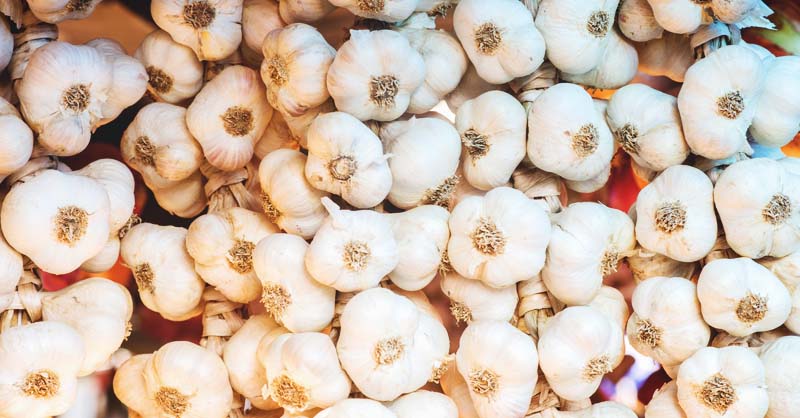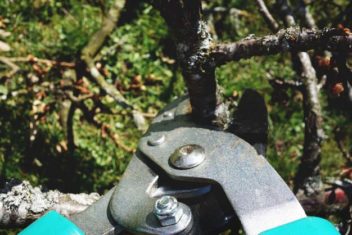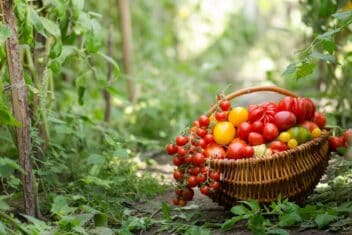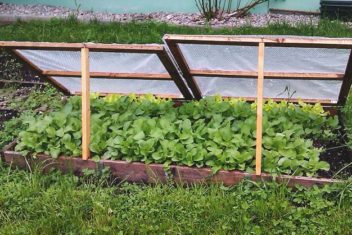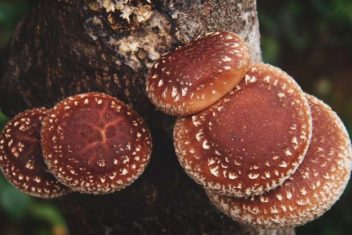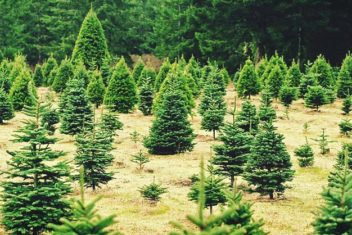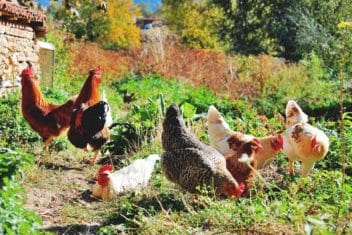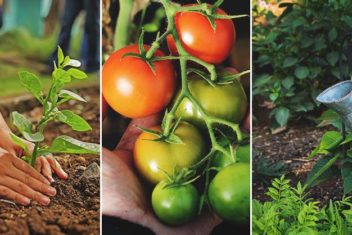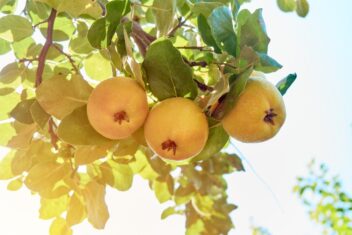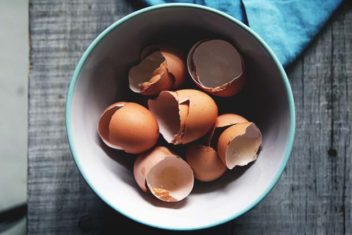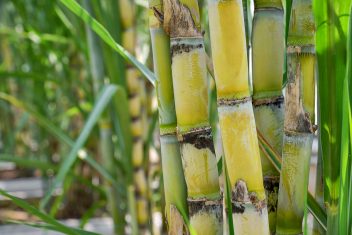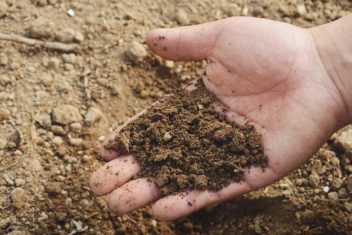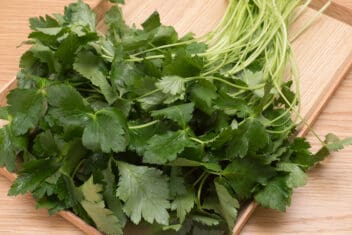Garlic is a staple in my kitchen. If I don’t have any on hand, it’s because I need to hit the grocery store to re-stock my cooking basics. Otherwise, I typically have multiple varieties ready to go.
The first time I tasted a locally grown clove, my eyes opened up to a world of garlic I never knew existed. The mild-tasting grocery store stuff no longer satisfied my taste buds. Most of the garlic in my fridge come from local farms and my garden.
This year is my second time growing garlic. I love fresh garlic so much I decided it was time to give it a little garden room. Truth be told, I was more interested in the scapes than the bulbs. Garlic scapes are a delicacy, and I never leave the farmer’s market without grabbing a bunch.
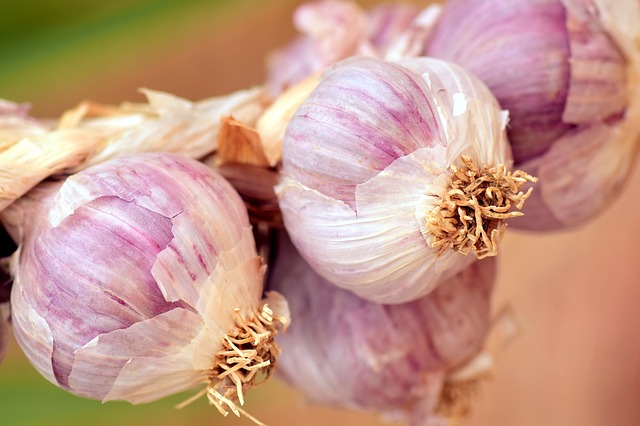
I enjoy watching my garlic grow, but I do wonder what’s going on under the soil. Crops that do most of their growing underground are mystifying. Growing garlic is a lot like growing potatoes. You hope for the best and end the season with a surprise (either a good one or bad one).
As the temperatures get hotter and the summer progresses, you may wonder, as I have in the past, when is the right time to collect these pungent bulbs? Below, you’ll find a brief outline of how to plant garlic, information on when to harvest, and tips for harvesting and preserving your bulbs.
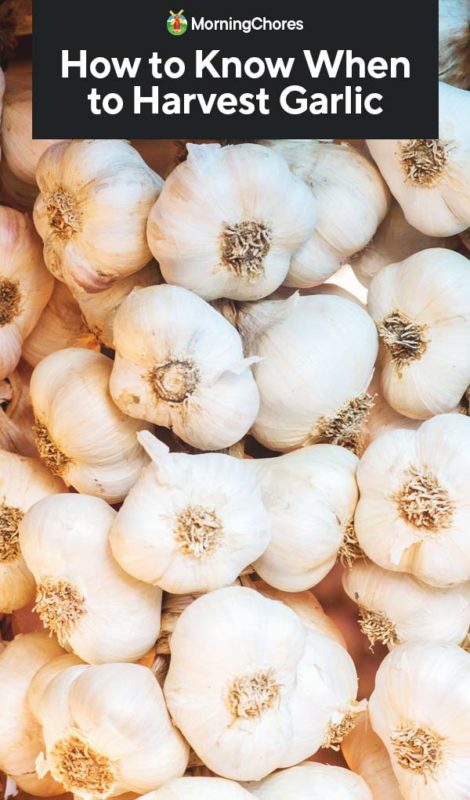
How to Plant Garlic
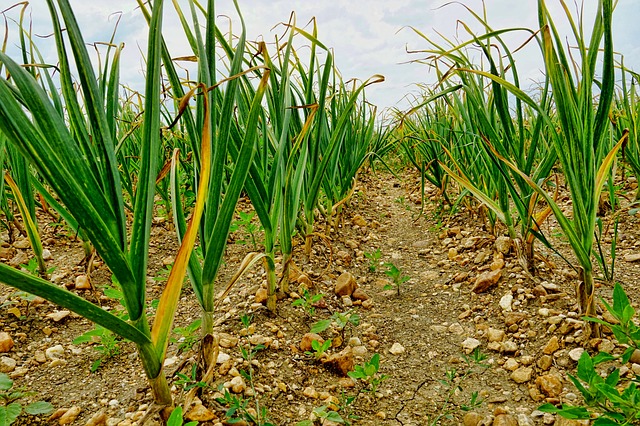
To harvest garlic, you have to get it growing first. You can check out our in-depth garlic planting guide for the complete low down on how to grow garlic, but here are a few brief notes on how to plant this versatile ingredient.
Typically you plant garlic in the fall for a summer harvest the following year. In warmer climes, gardeners may be able to plant later in the winter or early in the spring. Choose a spot in your garden that receives plenty of sunlight and where the soil is either slightly acidic or neutral. Plant in an area where the water doesn’t pool, this may lead to bulb rot. If planting in the fall, plant before a prolonged hard frost and be sure to purchase bulbs specifically for planting.
Like potatoes, store-bought garlic won’t grow or produce as prolifically as seed bulbs sold by local or online nurseries. Choose the biggest bulbs to plant. The larger the planted bulb, the bigger the resulting bulb will be once harvest time arrives. Plant the bulb with the pointy end up and be sure to mulch well.
Types of Garlic
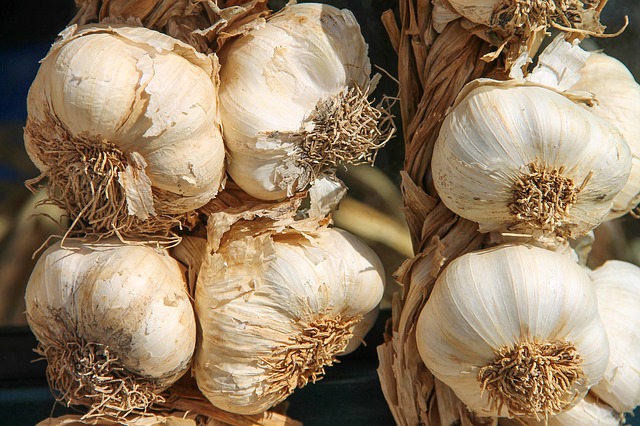
If you want to know when to harvest garlic, you need to know what type you’re growing. Most, but not all, garlic varieties mature around the same time. Days to maturity for most garlic types is about 90 days. The 90 days includes the growth period but not the time spent overwintering.
Choose garlic based on your zone. Most companies that sell garlic for planting will ship out seed garlic around the time when you should get it in the ground. If you receive your seed garlic and it’s still too early to plant it out, keep the cloves in the fridge until it’s time to plant.
Softneck – This variety of garlic is traditionally braided and is ideal for planting in southern regions. The large bulbs have a pungent flavor.
Hardneck – This variety of garlic is winter hardy, but not as pungent as soft neck garlic.
Elephant garlic – These massive garlic bulbs feature large cloves. Elephant garlic has quite a different flavor profile (more onion than garlic) than soft neck and hard neck varieties.
When to Harvest Garlic
The challenge of knowing when to harvest garlic is that you can’t leave it until the tops turn brown like you can with onion. Leaving garlic in the ground runs the risk of it rotting. On the other hand, harvesting too soon can result in smaller bulbs or can reduce the time it can be stored.
Fall planted garlic is usually harvested in mid to late summer. Since everything is happening underground, it can be hard to know when the timing is right, though, since weather conditions can push harvest time forward or back.
The leaves are a good indicator of harvest timing. Each leaf represents a protective layer wrapped around the garlic underground. The trick is to wait until about half of the leaves have turned brown and half are still green.
Don’t wait too long before harvesting. Leave bulbs too long and you might end up with deformed garlic bulbs that rot in the earth. If you’re growing this vegetable for the first time and you’re unsure whether the time is right, gently brush away the earth around the garlic greens and check to see whether a bulb has indeed formed under the earth. If the bulb looks ready, your entire crop is likely ready for harvest.
Avoid pulling bulbs too early, however, as the protective wrapper won’t be thick enough to protect from knicks and scratches, which can cause garlic to spoil quickly.
Tips for Harvesting Garlic
Now that you know when to harvest garlic, you may be excited to start aggressively collecting your garlic bulbs. Hold on, though. It’s best to gently dig out bulbs to prevent the flesh from getting punctured. Avoid pulling the garlic out of the ground, too.
Once harvested, garlic should be dried to prolong its life in storage. Leave bulbs exposed to dry air in a well-ventilated spot for up to 2 weeks. In a dry, sunny climate, this may be done outdoors. If your climate is anything like mine, though – humid and rainy – you’ll need to bring the process indoors.
Storing Garlic
Once the garlic has been dried thoroughly, store it in a cool, dry spot. Avoid storing in a place where there’s excess moisture. The fridge is not a good place for storing garlic either, though I’ve had success using a garlic keeper inside my fridge. You don’t need to sacrifice fridge space to store garlic, though, especially if it’s been adequately cured. If dried correctly (and appropriately stored) bulbs should last for several months.
Don’t Forget the Scapes
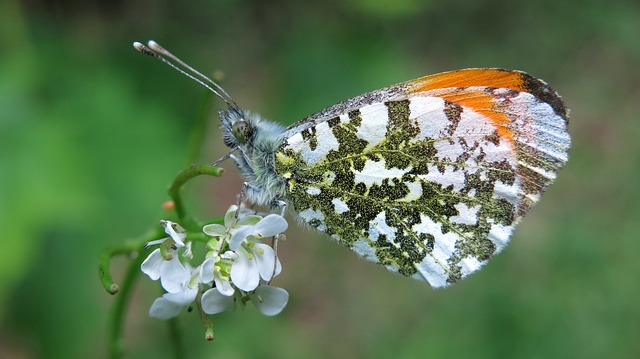
Did you know that before you harvest your garlic bulbs, there’s also another part of the garlic plant that you can eat? At some point in its growth period, your garlic plant will produce a central stalk called a garlic scape. It not only looks neat, but it’s also edible!
If you planted garlic in the fall, the scapes will likely start appearing sometime in late June. You can tell it’s a scape, because of its thick appearance compared to the leafy greens around it.
If you miss the harvest window for garlic scapes or don’t feel like harvesting, that scape will eventually turn into a garlic flower that will then produce seeds.
You can let garlic plants bloom. The flowers will attract pollinators and look beautiful in your garden, but you should expect smaller bulbs. Feel free to harvest scapes from some garlic plants and leave the stalks on others. I plan to harvest all my scapes because I planted a small crop of garlic, but next year I may consider a more abundant garlic crop so I can see a few blossoms.
Why Harvest Garlic Scapes?
Why bother harvesting the scapes? There are two important reasons.
- They’re delicious! Garlic scapes are one of my favorite CSA basket items, and I’m often on the lookout for them when I’m at the farmer’s market. I usually dice up the scapes and use them in place of garlic. They’re a little milder than a whole clove, but they taste so fresh and yummy. You can fry them up with a stir fry or even add them raw to salads for a garlicky flavor profile.
- Cutting the stalks re-routes your plant’s efforts to create a big tasty bulb of garlic. You’ll get bigger bulbs if you make sure to harvest the scapes.
When to Harvest Garlic Scapes
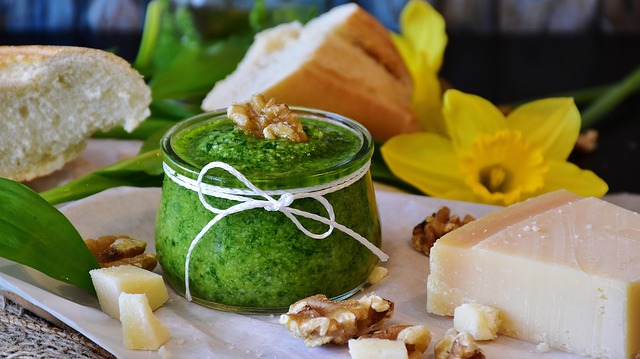
When should you harvest garlic scapes? Scapes begin to form several weeks before it’s time to harvest your garlic. You’ll notice a stalk start to appear at the center of the plant. Cut it once it starts to curl. You can store scapes in a ventilated plastic bag in the fridge for a week or two, but I’m sure they’ll quickly get eaten up!
Try grilling whole scapes on the BBQ before adding to a grilled chicken salad or a tasty flatbread concoction. I love making garlic scape pesto. I use it to make pasta dishes or as a spread on crackers or bread.
Let us know how your garlic harvesting adventures go!

